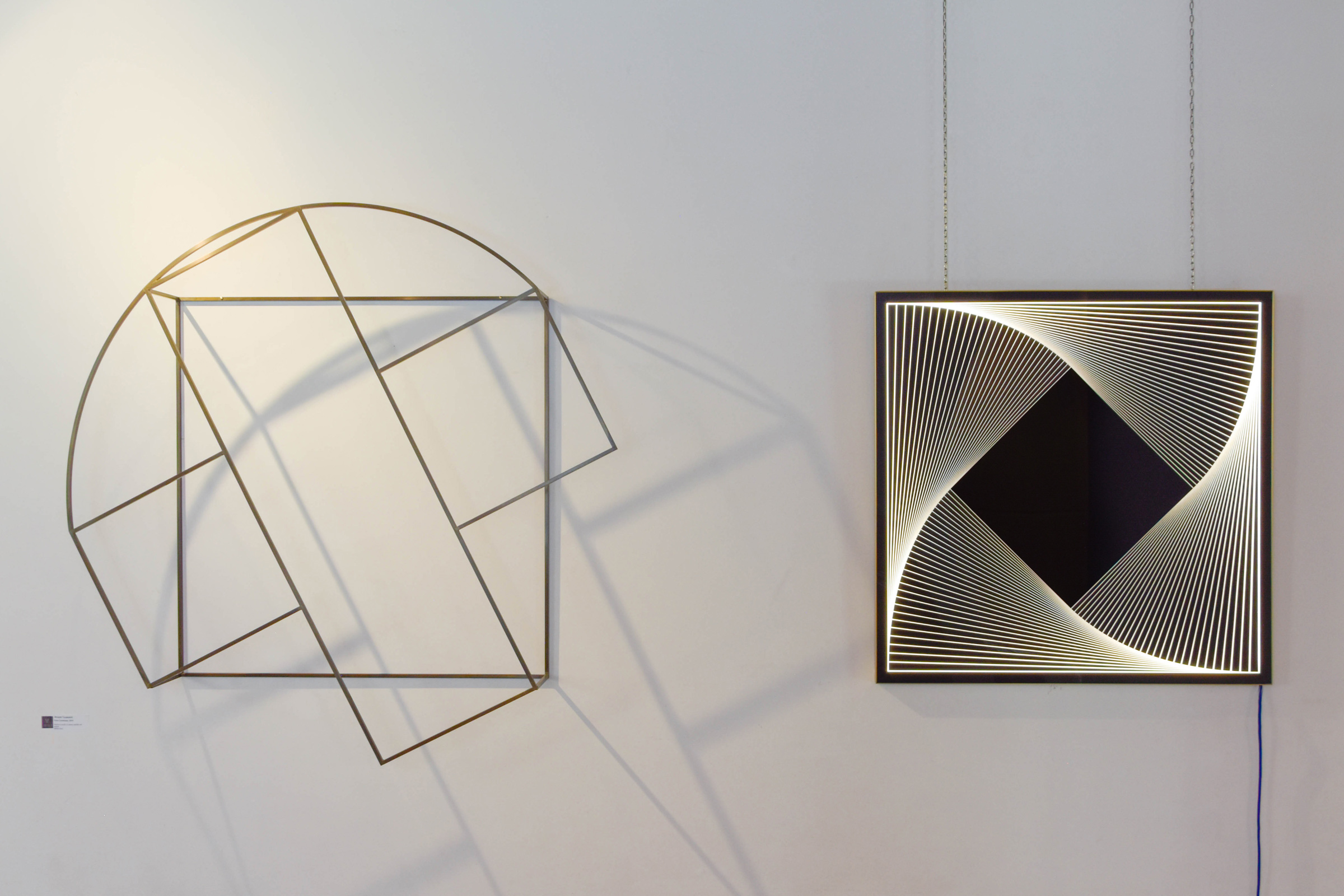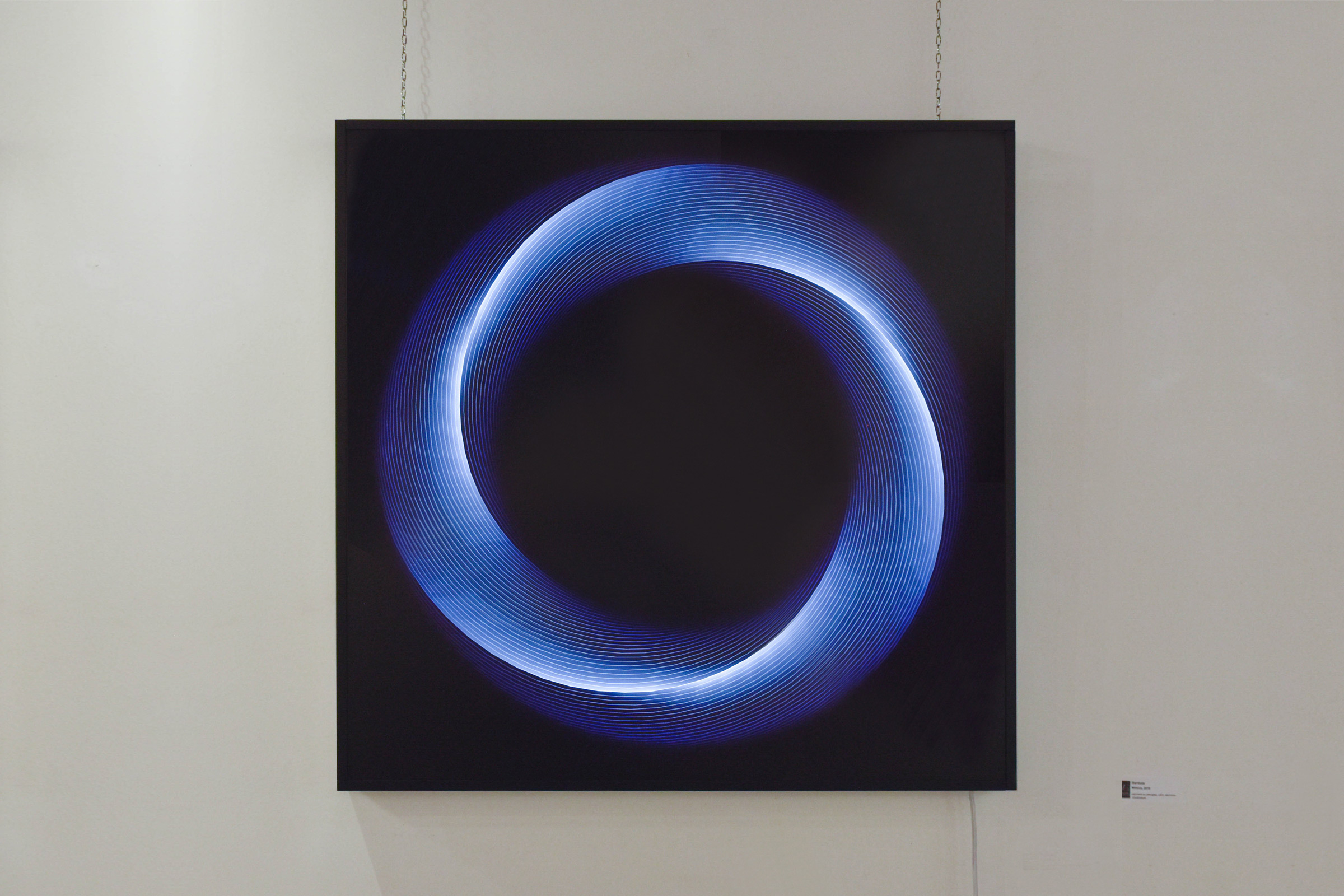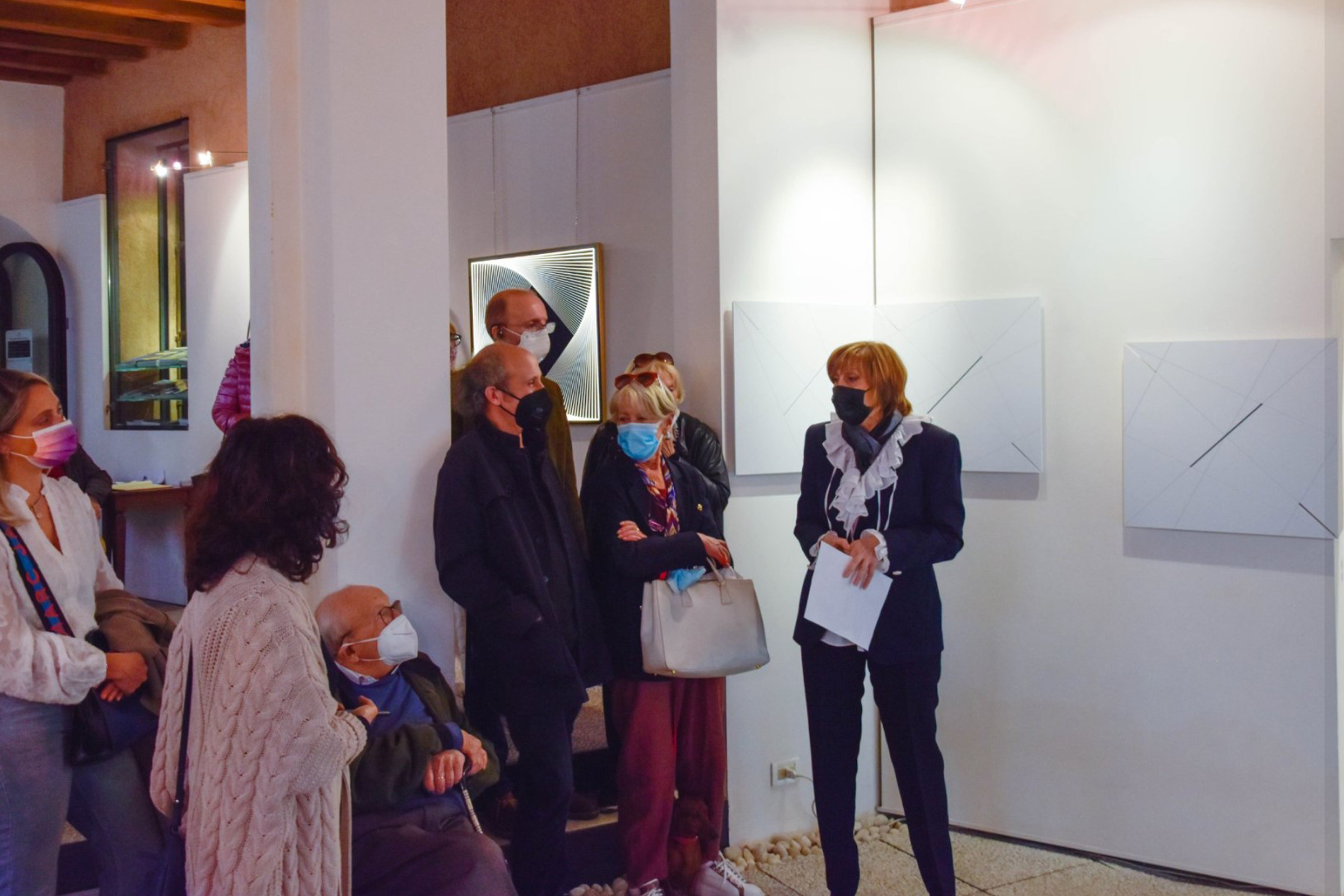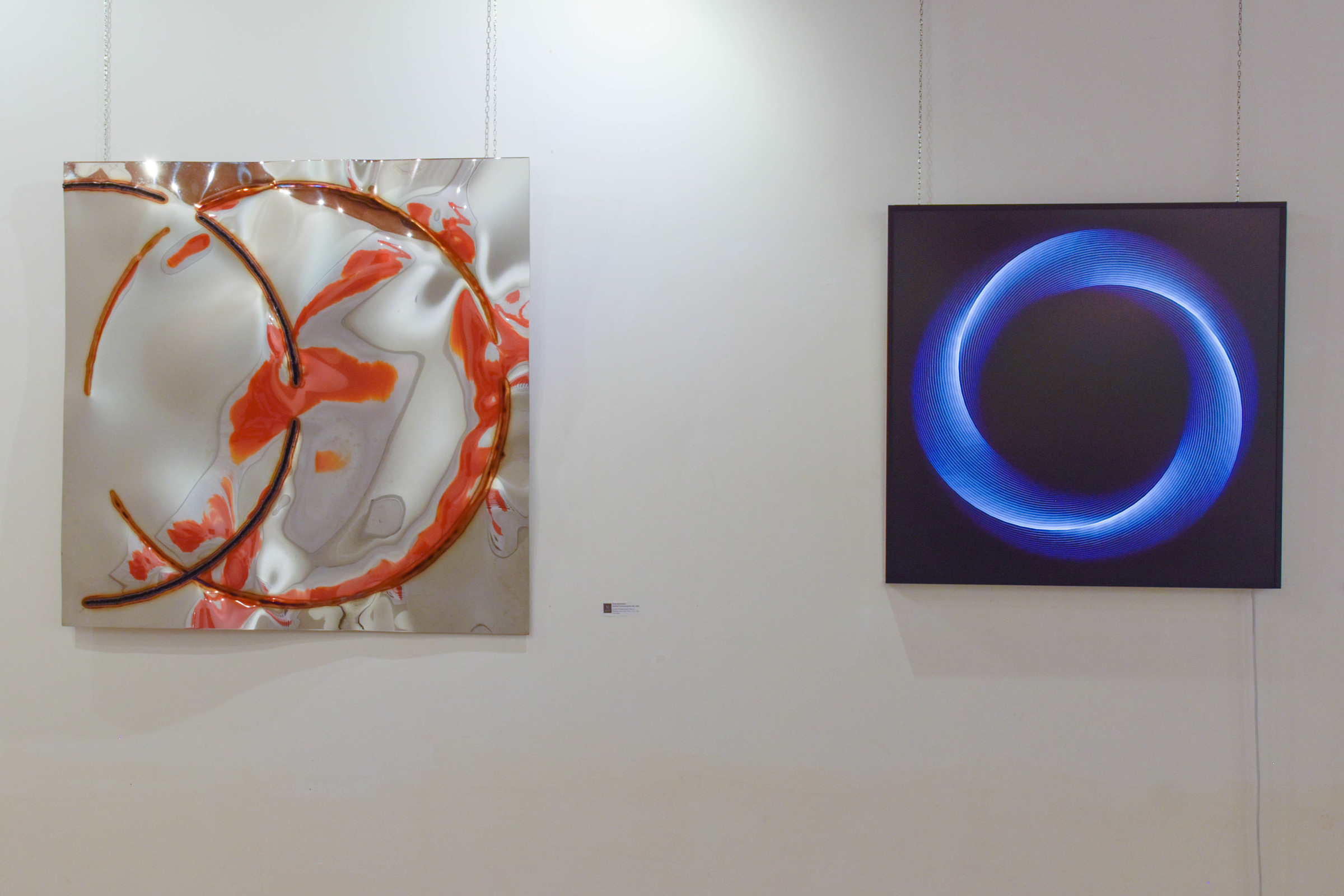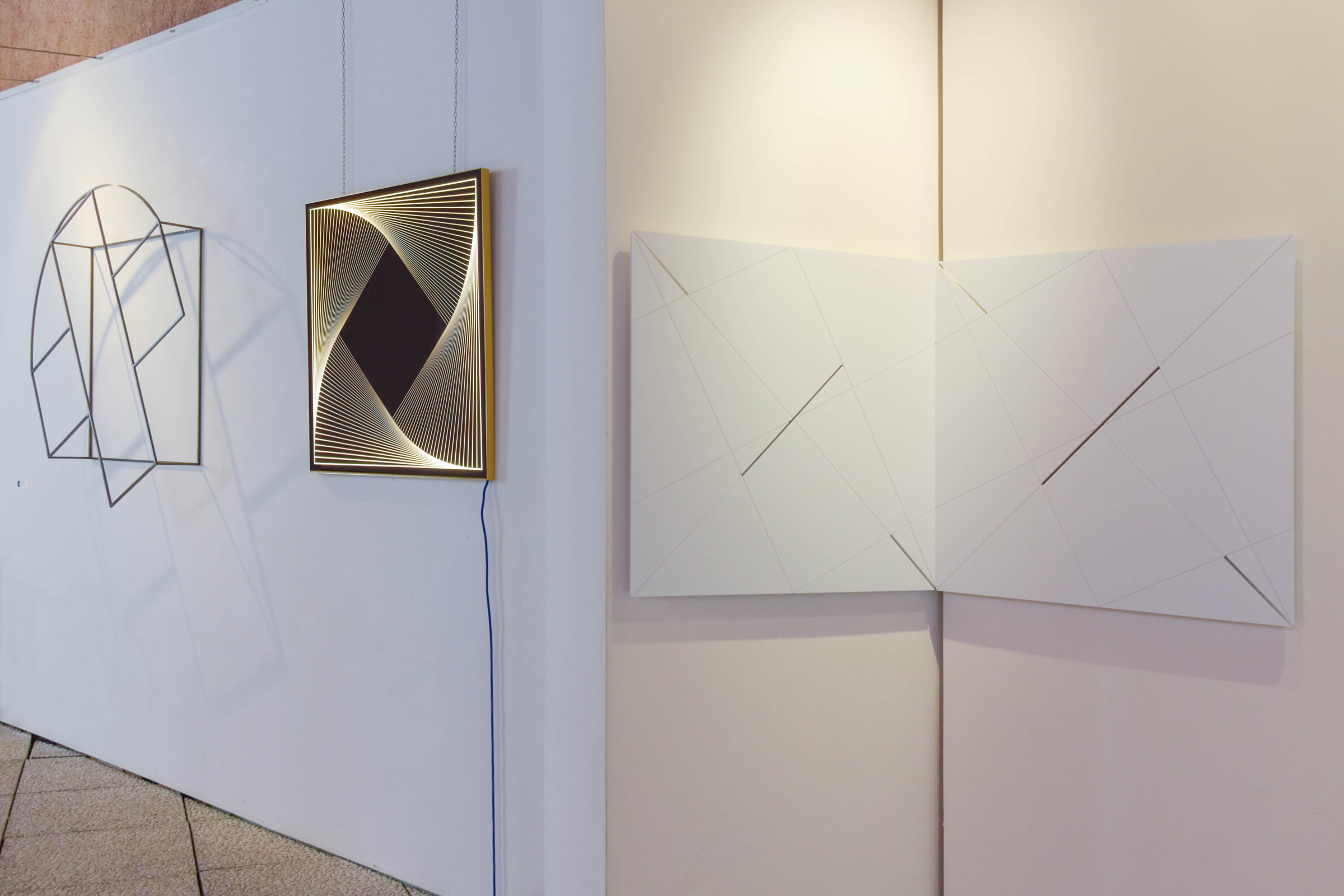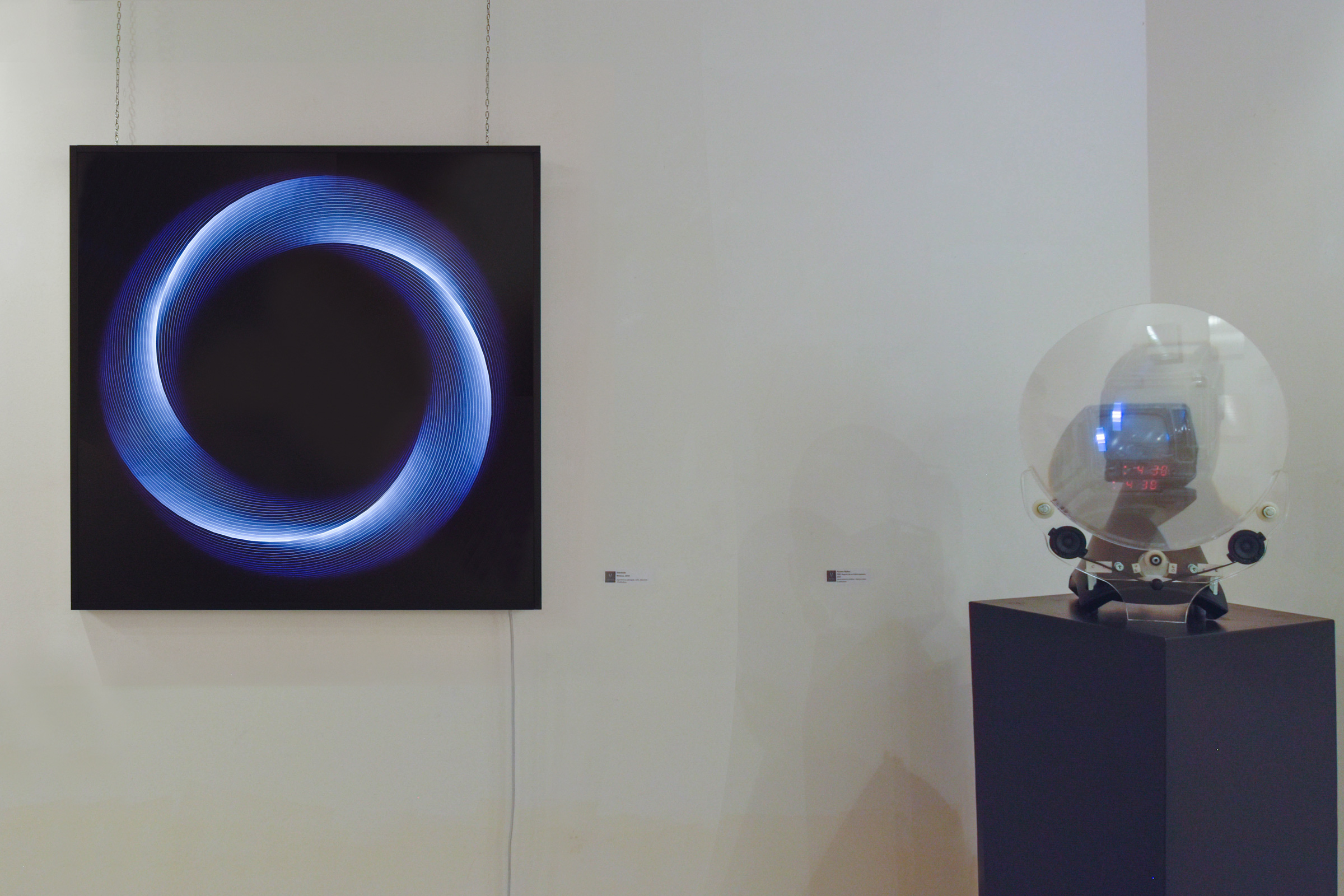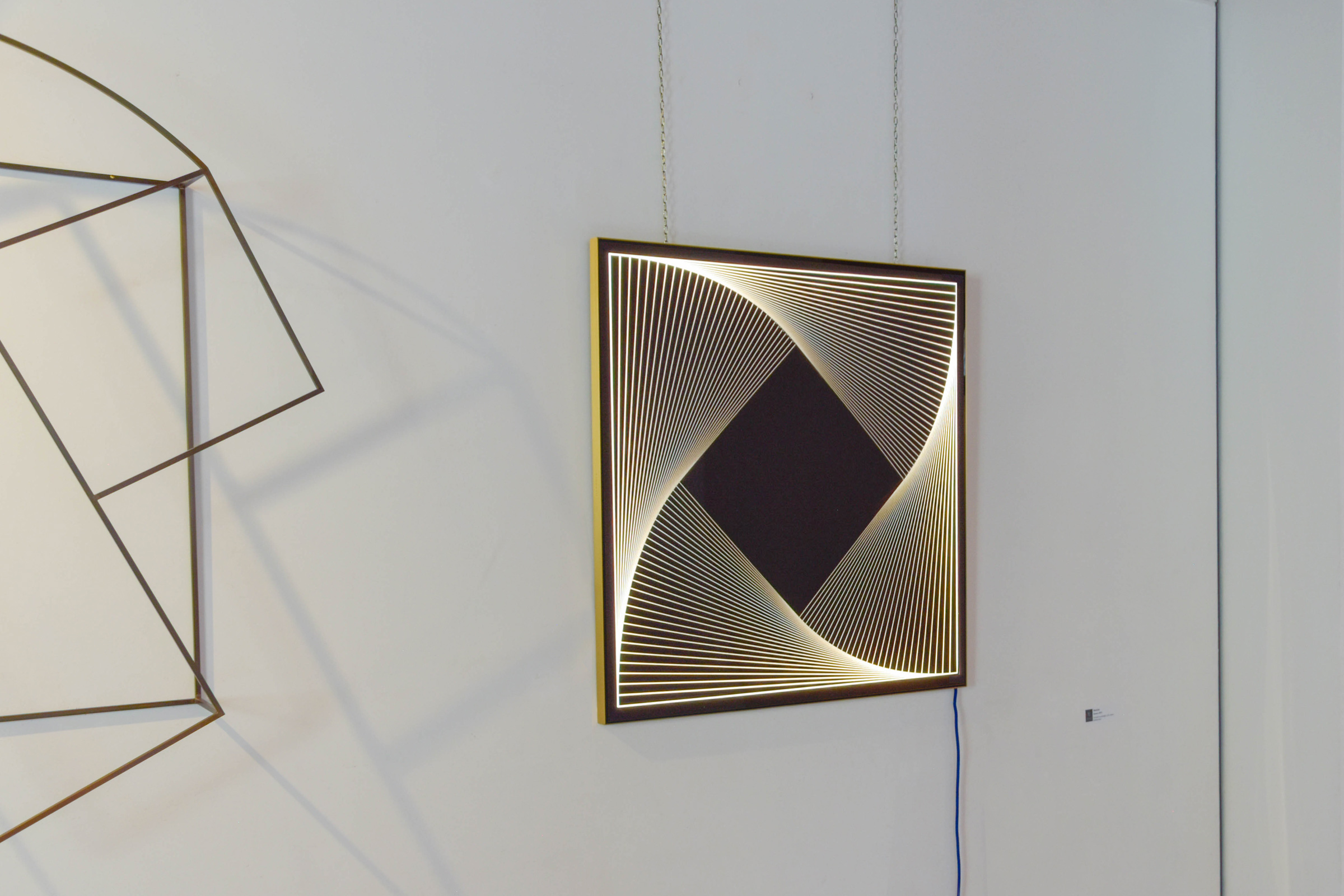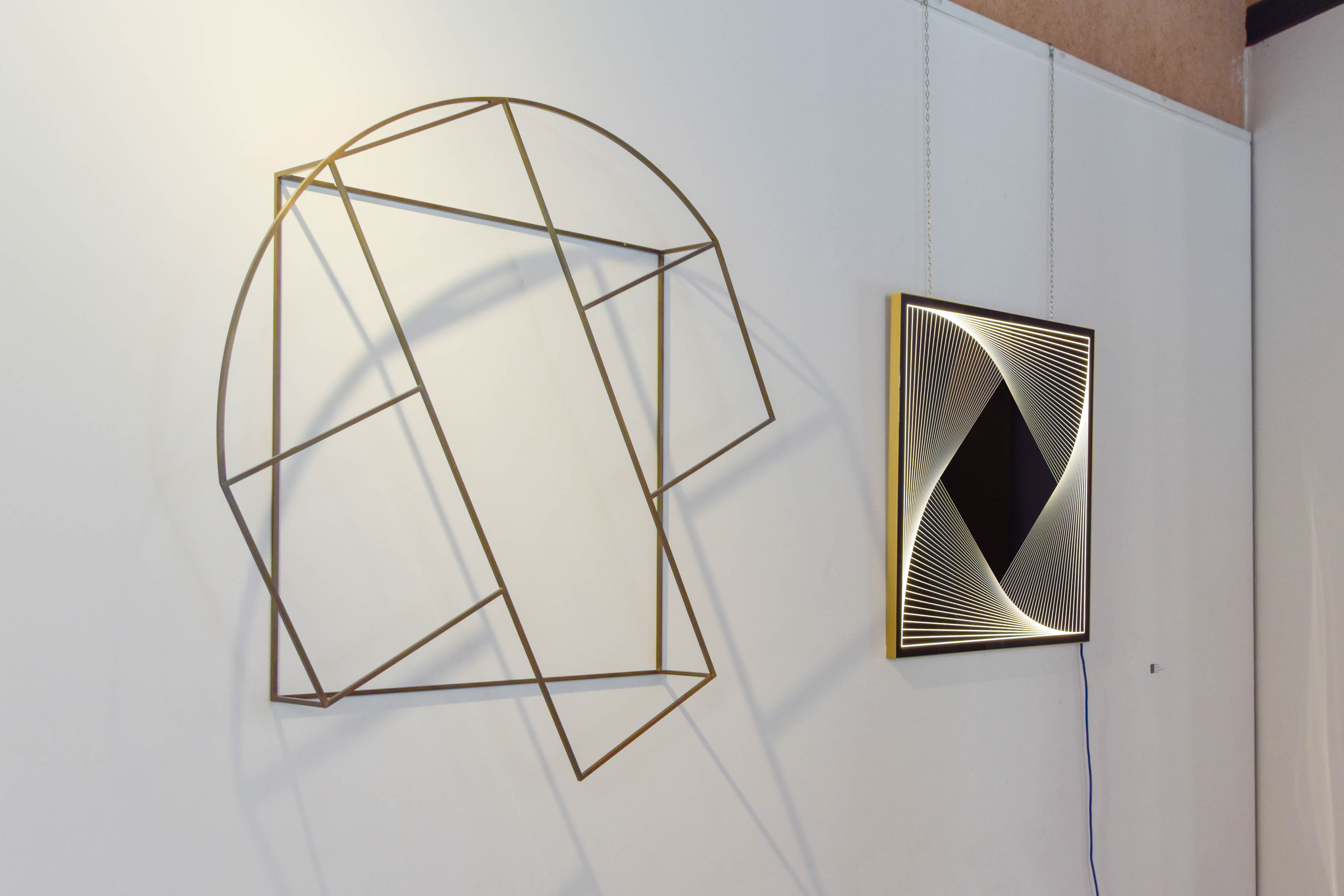Valmore Studio d'Arte, which since 1995 focuses on the relationship between art, science and new technologies, is an international reference point.
The 2nd Itinerary among the artists and works chosen by Valmore in her 26 years as a gallery owner has the theme "Art reflects on itself".
In the exhibition, 20 artworks, some of large dimensions, are made by 11 artists from different origins, age and research interests.
The works, created from 1970 to the present day, establish a dialogue with each other, highlighting some of the lines of research pursued by the artists over the last 50 years in an attempt to "redefine" painting and, more generally, to "structurally refounding" the work of art in its relationship with the artists themselves and with the spectator.
The leitmotif of the exhibition is the intention of the artists presented to focus not only on the artistic artefact but above all on the process of creating the work of art. The need to focus on the artistic process before the product itself.
Some artists (Cacciola, Griffa, Verna) investigate painting, which is considered by many to be a dead end, convinced that it can still give a great deal, carry out an in-depth analysis and knowledge of its fundamental components (sign, support, colour, etc.) without prejudice. In this way, "analytical painting" itself becomes an object of investigation, losing all connotations of referentiality, that is, of reference to something outside of it. The concept that is put into crisis is that of "representation" understood as the mimetic reproduction of the world. And to do this, the very presuppositions of artistic practice are rethought.
The reflection on the "sign", on its simplification and reduction, the identification of the fundamental properties of visual representation, the use of geometry, of its simple elements set in motion by rotations and translations, the passage between surface and space, between static and dynamic, are the features of the research of Toussaint, Gelmi and Bardula.
Other artists in the same years (Bonamini, Griffa) reflected on the importance and deep meaning of tracing a sign on the canvas or on a support, on the spatial and temporal dimension of this gesture, on the temporal dimension of the process of execution of a work.
A great contribution to the temporal dimension of the work sought by the artists is also the process of colour/support stratification, i.e. the process of spreading the material on the canvas (Bonamini, Cacciola, Toussaint, Bedeschi).
A final thematic nucleus is that of "reflection", understood as a work that reflects the environment around it, placing the spectator at the centre, who becomes physically part of it. In fact, the spectator is visually incorporated into the aesthetics of the work of art (Luther, Bonamini, Balbo) and his or her gaze is fundamental in the completion of the process.
The final stage in this process is represented by the robotic head that reflects on the plaster bust of Michelangelo. In the intentions of the artist (Guzzetti), the gaze is no longer, or not only, that of the spectator, the work of art has appropriated its own gaze, it observes, reflects, and interacts with the environment and with the spectator. The work of art has become a technological organism which, confused among human beings, autonomously explores the world to understand its origins and future possibilities.
